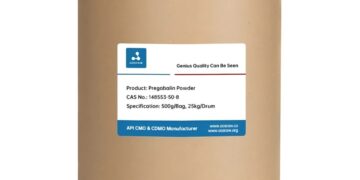How do you differentiate products? When we talk about individual units, we human beings can distinguish them by comparing their packaging, size or brand; however, it’s not the same for computer systems. At the retail/conveyance stores the products are identified and billed by scanning their barcodes. Not just retail stores, barcodes play a critical role in the supply chain journey of products, right from the point they are manufactured and leave your unit. Every barcode encodes a specific unique identification number that facilitates information flow throughout the product’s journey. This number is the GTIN (Global Trade Item Number).
What is GTIN
GTIN is a unique identification number that provides a unique identity to every product being sold in the market. It is exclusive to each stock-keeping unit (SKU) or an individual unit. Just as your fingerprint is unique to you, a GTIN is uniquely composed for every product type. There are three types of GTIN formats – GTIN-12, GTIN-13 and GTIN-8. All three are structured and standardised to meet the global trade requirements and regulatory needs.
GTIN-12 – It is a 12 digits unique identification number which is encoded in a UPC-A barcode. This type is specifically used in North America to identify the products manufactured and sold.
GTIN-13 – This is a 13 digits unique identification number encoded in EAN-13 barcode type. GTIN-13 is used and accepted all across the globe.
GTIN-14 – This unique identification number is composed of GTIN-13 and an indicator digit as the prefix. The GTIN-14 is encoded only in an ITF-14 barcode to enable shipment identification across the supply chain. The indicator digit ‘0’ is reserved for shipments having products of the same variation; whereas, indicator digit ‘9’ is reserved for shipments carrying products with different variations.
GTIN-8 – It is an 8-digits unique identification number used on smaller products such as cosmetics. It can be encoded in either a UPC-E barcode format or EAN-8 barcode format, depending on the product’s origin.
The structure of these barcodes is pre-defined by GS1 (the global supply chain standards organisation). The structure constitutes four key components that are defined below –
- Country Code – It is a unique code provided to countries by GS1 Global. India has the country code ‘890’. All product barcodes in India; therefore, start with ‘890’.
- Company Code – This code is assigned to the company registered for barcodes by the GS1 member organisation. In India, GS1 India is the only organisation authorised to issue company code to registered companies.
- Product Code – Depending on the company’s coding requirements and subscription model, the company creates a unique product code.
- Check Digit – The last single digit of every barcode on retail products is termed as check digit. It can be used to validate the composition of the complete GTIN.
Country code and company code together form the Global Company Prefix (GCP) of an organsiation. This GCP can then be used by companies to log into their DataKart (National Product Data Repository) account and generate GTINs.
How is GTIN used?
GTIN is used across multiple industries to streamline flow of accurate information throughout the processes. When barcodes are scanned using a scanner or through mobile phones (in case of a 2D barcode), the scanner transmits information associated with that GTIN to the system. In simpler terms, the scanner or camera captures the bar pattern and decodes it into the numerical GTIN. The decoded GTIN is then used to retrieve detailed information about the product, such as its price, description, and other information from a database. The local product databases/ ERP systems at point-of-sale are usually integrated with GS1 India’s DataKart to access updated and accurate data on the selected/scanned products.
Benefits of GTIN for Businesses
Improved Inventory Management – GTIN when encoded in barcode facilitates accurate inventory management. Businesses can ensure they have timely stock replenishments and mitigate instances of stockouts or overstocking.
Unique Product Identification – With GTIN, products are uniquely identified, globally, at online and offline marketplaces. With GTIN being accepted across the globe, products are also compatible for global trade and meet global compliance requirements.
Faster Product Listing – Products with GTIN enjoy faster listing on e-marketplaces like Flipkart and Amazon. Sellers can provide GTIN and the e-commerce platform, automatically fetches product information listed with the number, saving time and efforts.
Elevated Consumer Trust – Businesses are better able to build trust and confidence in their consumers with the integration of GTIN/barcodes. GTIN provides customers accurate information about products, empowering them in making more sensible decisions. Customers can search product information associated with the GTIN through the ‘Smart Consumer app’. The app is developed especially for consumers to provide authentic and detailed information on retail products.
How to Obtain a GTIN
In order to obtain a GTIN you can follow the below listed steps –
Step 1 – Visit GS1 India’s website, or follow this link – https://www.gs1india.org/
Step 2 – Under the services section, visit ‘Register for barcodes’ page.
Step 3 – Click on the Register Now button, you will be taken to the registration form. Fill the complete registration form by providing all accurate information about your company and uploading all the required documents.
Step 4 – Upon completing the form registration, click the submit button and pay the registration fees.
Step 5 – Within 7-10 working days you will be sent your barcode allotment letter along with your GCP (Global Company Prefix). You can use this GCP to log into your DataKart account and start generating GTINs.
Please note GS1 India is the only organsiation in India which is authorised to issue barcodes to companies in India. No other company apart from GS1 India can issue authorised barcodes to you. Companies are requested to make informed decisions while taking barcodes from unauthorised service providers. GS1 barcodes are the only barcodes that are capable of providing you with the interoperability required for global trade.
Conclusion
GTIN or the Global Trade Item Number is crucial in ensuring products are being sold transparently. GTIN integration and adoption is not only beneficial for the supply chain stakeholders but also for the end-consumers, empowering them with informed purchases. For further information on the importance of GTIN, please reach out to the GS1 India team.



































